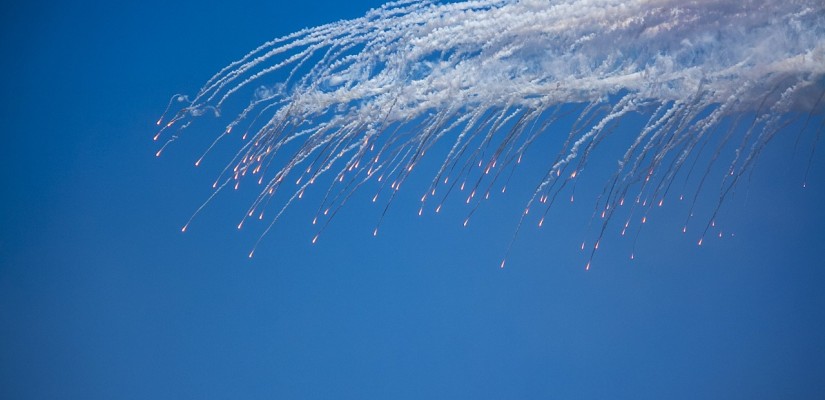On October 5, 2018, Indian Prime Minister Narendra Modi and Russian President Vladimir Putin signed a $5 billion USD deal to buy the Russian-developed S-400 "Triumf" air and missile defense system. The S-400s are manufactured by Almaz Central Design Bureau and is an advanced long-range anti-aircraft missile system with the capacity of destroying aircraft, unmanned aerial vehicles (UAVs), as well as both ballistic and cruise missiles. The system can engage up to 36 targets simultaneously within a range of 400 kilometers and at an altitude of up to 30 kilometers. This mobile system can also be deployed within just five minutes and as such, provide a series of international security implications.
India is just the latest country on a growing list of nations eager to purchase the Russian-made system. In December of 2017, Turkey signed a deal to purchase S-400s, which had significant political side effects with their NATO allies who were firmly opposed to the sale. Turkey is scheduled to receive their S-400 systems in 2019. China had also agreed to purchase the S-400 system in late 2014, with the first units already arriving for Chinese testing in 2018. Saudi Arabia and Qatar have stated their interest in purchasing the S-400 system as well. As of October 2018, Russia has deployed their S-300 air and missile defense system the predecessor to the S-400 to Syrian response to the downing of a Russian plane. Syria joins an extensive list of nations possessing Russia's S-300 system that includes NATO member Greece.

The United States and its NATO allies have been particularly alarmed by the popularity of the S-400 system. Those purchasing the S-400 system do so under threat of U.S. sanctions that are intended to stop other nations from collaborating with Russia, given Russia's increased military activity across the globe. In 201 7, the U.S. initiated the Countering America's Adversaries Through Sanctions Act (CAATSA) in response to Russian interference in the 2016 U.S. presidential elections as well as Russia's military involvement in Syria and Ukraine. CAATSA allows the U.S. to act against individuals, companies or countries that are purchasing military weapons and equipment from manufacturers in Russia, North Korea, and Iran. India, Turkey and China have each requested to be excused from these U.S. sanctions, yet it appears that the U.S. government is not interested in granting any exceptions at this time.
By selling their advanced weapons systems, Russia is able to spread their influence across the globe and in key areas. Beyond just the S-400, India and Russia are expected to increase cooperation in defense, nuclear energy, trade, and space exploration. Increased cooperation between Russia and emerging powers like China, India, and Turkey does not bode well for the United States and its interests abroad. Simply put, as these critical nations work closer with Russia, they are concurrently shifting away from the United States. The attempt by the U.S. to isolate Russia from potential buyers has seemingly failed, as nations still line up to purchase Russian-made weapons systems including the missile defense systems and fighter jets. Furthermore, with nations like China, India, and Turkey persistent on the purchase of Russian-made weapon systems, it is plausible that U.S. sanctions would instead be detrimental to U.S. diplomatic relations with these nations.

In addition to the aforementioned nations purchasing or receiving the S-400 system, Russia has also stepped up its military exercises. In September of 2018, Russia participated in the Vostok-2018 war games in eastern Siberia along with Chinese and Mongolian troops. These war games serve as a demonstration to Western powers that Russia is increasing its cooperation with other key nations in the region. Additionally, Russia has been striving to continuously improve its military capabilities. Russia is already developing the next-generation S-500 air and missile defense system, further explaining their willingness to sell their S-400 model to others. The United States and its NATO allies also have a premier arsenal of military equipment but are much more cautious when it comes to sharing the technical data and intelligence associated with their weapon systems. As more and more allies of the United States purchase advanced military weaponry from Russia, Washington will need to reevaluate how it will counteract this trend.
Topping Russia's list of potential S-400 buyers is Saudi Arabia. In 2017, a Saudi-owned television station reported that Saudi Arabian King Salman bin Abdulaziz Al Saud had agreed to purchase the S-400 system from Russia. Additionally, it was reported that the two nations had signed a Memorandum of Understanding in which Russia would aid Saudi Arabia in developing its own military industries. This development came as a shock to Washington, as the U.S. is traditionally the main supplier of weapon systems to Saudi Arabia. While there has been no public purchase of the S-400 system, it is likely that Saudi Arabia will be next in line to finalize a deal with Russia.
India's purchase of Russia's S-400 system and their subsequent agreement to increase cooperation with Russia shows that Moscow is capable of constructing strong partnerships with key regional actors despite the threat of U.S. sanctions. Moreover, Russia is effectively creating significant alliances despite efforts from the U.S. and NATO to prevent such actions. More than just the S-400, President Putin has found a way challenge the United States as a global arms dealer and provide cost effective alternatives to U.S. and NATO weapon systems.
